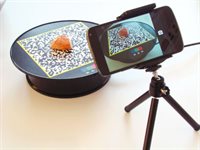 Cuneiform script is one of mankind’s earliest systems of writing, first developed in Mesopotamia around 3300 BCE. Cuneiform scribes wrote by pressing a reed stylus into soft clay tablets producing wedge-like impressions - hence, the name cuneiform, from Latin cuneus ‘wedge’ and forma ‘shape’. Ancient cuneiform texts depict the religious, literary, scientific and everyday life of their era. There are encyclopaedias, dictionaries, political texts, letters, administrative documents and scribe school tablets as well as epic stories like the British Museum flood tablet and the recently deciphered ark tablet.
Cuneiform script is one of mankind’s earliest systems of writing, first developed in Mesopotamia around 3300 BCE. Cuneiform scribes wrote by pressing a reed stylus into soft clay tablets producing wedge-like impressions - hence, the name cuneiform, from Latin cuneus ‘wedge’ and forma ‘shape’. Ancient cuneiform texts depict the religious, literary, scientific and everyday life of their era. There are encyclopaedias, dictionaries, political texts, letters, administrative documents and scribe school tablets as well as epic stories like the British Museum flood tablet and the recently deciphered ark tablet.
As a medium, clay has proven durable over the millennia in terms of preserving inscriptions but the excavated artefacts we have today are predominantly fragmented. The reconstruction of these fragments is like a worldwide jigsaw puzzle of gigantic proportion. But unlike jigsaw puzzles of thousands of pieces, which computers can now easily solve, these pieces are complex free-form 3D objects and they form an unknown number of complete or incomplete tablets whose surviving pieces can be eroded and may no longer fit well together.
